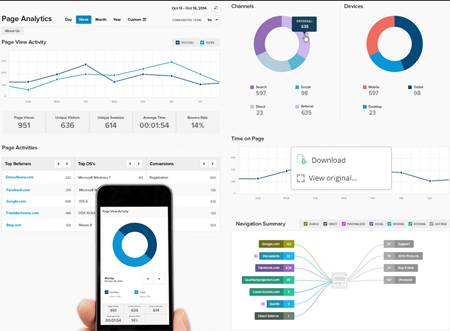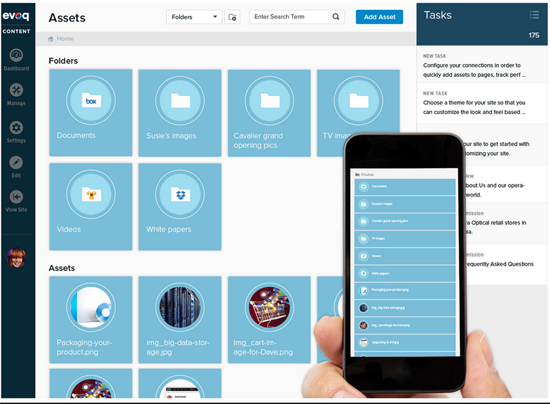DNN's New Evoq 8 In a Digital Nutshell

Today's marketers are responsible for an increasing number of functions within their enterprises. In fact, DNN found that the majority of marketers at mid-size companies manage five or more functions and more than half (53 percent) rely on five or more discrete technology solutions to do so - adding complexity to their already-complex positions.
Following this telling research, DNN announced general availability of Evoq 8 (Website Magazine previewed it here last October), which enables marketers to essentially do more with less, as it empowers them to publish content to any online channel, personalize it to each visitor and measure its effectiveness all within Evoq 8.
For those already familiar with Evoq, they may be aware that many of its features were tailored to IT professionals - something that can be intimidating to the everyday content writer or business user. The new Evoq experience, however, is suited for anyone who can drag and drop, yet wants and needs the ability to publish content to any online channel and then measure its effectiveness. As DNN VP of Product Management Will Morgenweck put it in an interview with Website Magazine, DNN has taken the drag-and-drop experience and laid it on top of DNN's powerful platform, without comprising any of the aspects that have been DNN's strongpoints.
Some of the new features of Evoq 8 include the ability for marketers and content writers to quickly see how their content is performing on both a page level and the site as a whole (see dashboard image below). They are able to see statistics on page views, referrers, unique visitors and conversions, which are presented as an overlay on each Web page, via data collected and managed by Evoq. This means every user can see how content is performing without needing a high level of proficiency with analytics or access to a separate Web analytics system. Users can also view a navigation summary, to see how people are coming to the page and how they are leaving.

Also new to Evoq 8 are configurations with Box, Dropbox, Amazon S3 and SharePoint, so that users can access all digital assets from a single window - eliminating the need to visit various cloud storage solutions to pull up images, content or other files needed to create or update content in Evoq (see image below).

Perhaps most interesting to content writers and marketers is the ability to personalize site content based on visitors' profiles. They can create rules based on geography, account registration (e.g. registered versus non-registered), gender, age, recent visits, referral source, search terms and ad clicks. While content personalization can be labor intensive (the different content versions do need to be created, after all), Evoq 8 gives users the ability to change a single piece of content - for example, copy that simply says "Nice to See You Again" for returning visitors or "Welcome" for new ones.
To further Evoq's visitor profiles, it plans to integrate with CRMs as early as this summer.
The final piece of Evoq 8's "pie," is its advocate marketing update. Evoq 8 helps marketers activate brand advocates already on their website by rewarding them (e.g. awarding points, giving badges, showing up in a leader-board, etc.) for completing certain actions, like sharing content on their personal social networks. In turn, companies are able to see what happens on the other end of the share. For example, did this person bring back 100 people of which 10 percent registered? The company is also able to get basic authorization on their social accounts and verify name and email address, get their social media picture to add to their customer profile, check to see how many people their social media post reached, number of views, likes and comments, etc., from Facebook, LinkedIn and Twitter.
These analytics, personalization, cloud storage configurations and advocate marketing updates are Evoq 8 in a nutshell, but, in even further summary, Evoq 8 is easier to use and more empowering to the everyday user than the versions that have come before it, while going beyond what most people expect a content management system to do.

Subscribe to Our Newsletter!
Latest in Software








